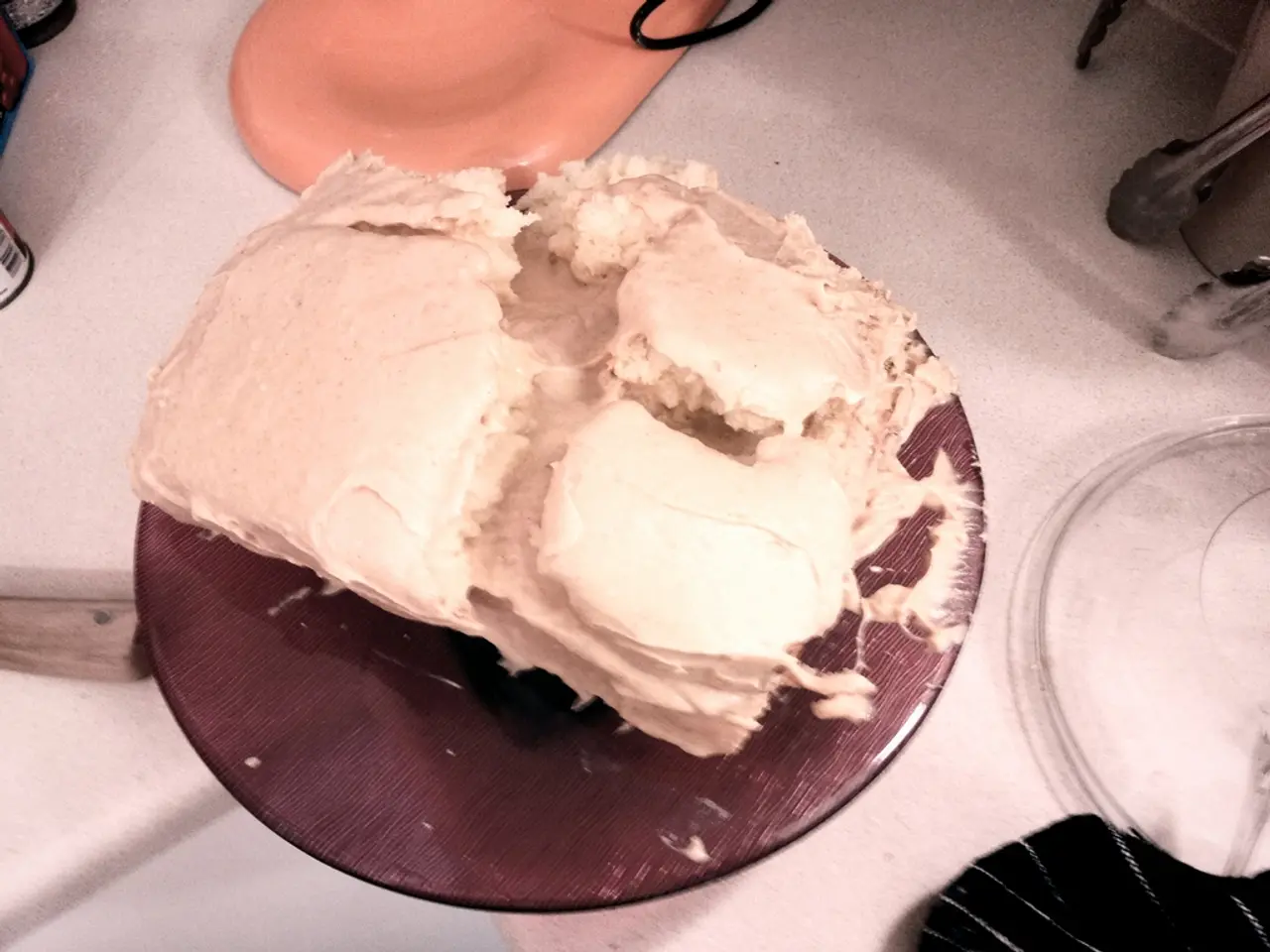Age Spots: Causes, Manifestations, and Solutions
In the quest to maintain healthy, youthful-looking skin, age spots have become a common concern for many individuals. These flat, darker marks on the skin, often appearing as tan, brown, or black spots, resembling freckles, are caused by prolonged sun exposure and are more common in people with lighter skin.
Age spots, also known as solar lentigines or liver spots, can form on areas of the skin commonly exposed to the sun, such as the face, backs of hands, shoulders, backarms, and tops of feet. While they are generally harmless, they can resemble precancerous growths like actinic keratosis, making it difficult to differentiate them from melanoma, a type of skin cancer. If a doctor is unsure, they may order a skin biopsy.
Prevention is key when it comes to age spots. Wearing protective clothing like hats, long sleeves, sunglasses, and staying indoors during the hottest parts of the day can help prevent their formation. Additionally, avoiding tanning beds, water, snow, and sand during peak sun hours, wearing UPF clothing, and using SPF lip balm can further protect the skin from sun damage.
If age spots have already developed, there are safe and effective methods for removing them cosmetically. Both at-home topical treatments and professional procedures are available. Over-the-counter dark spot correctors containing ingredients such as azelaic acid, kojic acid, niacinamide, tranexamic acid, retinol, arbutin, and certain alpha hydroxy acids (glycolic, mandelic, kojic, salicylic) have been shown to effectively fade age spots by promoting skin cell turnover and reducing pigmentation. Natural remedies like lemon juice, aloe vera, papaya paste, apple cider vinegar diluted with water, castor oil, and potato extract may also promote gradual lightening of age spots through exfoliation and skin rejuvenation, although results take longer (weeks to months) and should be applied cautiously to avoid irritation.
Professional treatments like laser therapy, chemical peels, and microdermabrasion offer quicker, more dramatic results under expert supervision. Laser therapy precisely targets pigmented cells to break down age spots with minimal damage to surrounding skin, while chemical peels use acid solutions to exfoliate the top skin layers, improving discoloration and texture. Microdermabrasion is a gentle mechanical exfoliation that removes the outer layer of skin, boosting cell turnover and lightening spots over time with minimal downtime.
It is essential to combine treatments with strict sun protection to maintain results and prevent recurrence. Using a sunscreen with SPF 30, UVA and UVB protection, and reapplying it every 2 hours or after sweating or being in the water can help prevent new age spots and protect treated skin from darkening again.
In conclusion, for cosmetic removal of age spots, the safest and most effective approaches start with dermatologist-recommended topical agents or natural remedies for mild cases, while professional treatments like laser therapy and chemical peels provide quicker, more dramatic results under expert supervision. Always consult with a dermatologist before starting any treatment, as these procedures can carry risks, such as scarring, and should be performed by a specially trained dermatologist. Early diagnosis of skin cancer increases the chances of successful treatment, so if you suspect you have AK growths, visit a doctor for an examination.
- Age spots, also known as solar lentigines or liver spots, can be related to multiple medical conditions, such as obesity, diabetes, and multiple sclerosis.
- Antiaging skincare products and routines are often used to combat signs of aging, including age spots, and can be a part of one's health-and-wellness plan.
- Dermatitis, psoriasis, and Crohn's disease are unrelated to age spots but may require similar medical attention and care for the skin.
- The science of predictive dermatology is being developed to help diagnose skin conditions like age spots and skin cancer at early stages, improving overall health.
- Sun exposure is one of the primary causes of age spots and can lead to other skin problems, such as wrinkles and premature aging.
- Protective clothing, staying indoors, and using sunscreens with SPF are necessary measures to prevent age spots and further sun damage.
- No matter the treatment method for age spots, it is important to maintain a consistent skincare regimen, including moisturizers, anti-aging creams, and sunscreens, to keep the skin healthy and youthful.
- Atopic dermatitis and age spots might coexist in some individuals, especially those with lighter skin, making it essential to keep the skin protected and free from irritation.
- Age spots, in addition to being unsightly, can also serve as a reminder of sun exposure, prompting people to prioritize skincare and UV protection for their overall health and wellness.
- Skin biopsies may be necessary when there is uncertainty about the nature of a skin growth, such as an age spot or a sign of skin cancer.
- Regular check-ups with a dermatologist can help monitor the health of your skin, identify potential issues like age spots or sun damage, and provide you with professional advice to maintain glowing, youthful skin.




